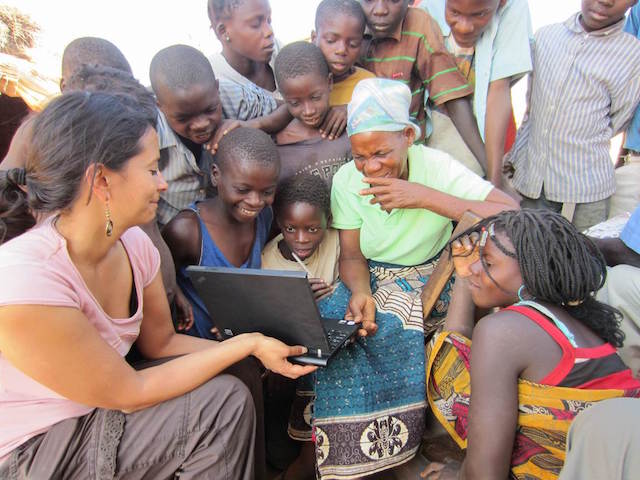About 15 years ago, Human Rights Watch realized we had to get more serious about physical security. The risks to ourselves and others were too great, so we created a security team to develop guidelines and to implement protocols. A few years ago, we made the overdue decision to hire a full-time security director.
We cannot eliminate the mental stresses of human rights work, but we can offer preventive care and remedies to stay healthy and productive over the long-term.
Today we’re taking similar steps to protect the mental health of our roughly 450 staff around the world. We cannot eliminate the mental stresses of human rights work, but we can offer preventive care and remedies to stay healthy and productive over the long-term.
In part this is linked to staying physically safe. Groups like Tactical Tech use the term “holistic security” to describe the interplay between self-care, psycho-social well-being and physical safety. When employees are sleep deprived, anxious or stressed, they are more likely to magnify minor incidents or to downplay serious threats.

Human Rights Watch (All rights reserved)
A Human Rights Watch researcher showing a video to villagers in Mozambique, 2013.
Arguments of efficiency also carry weight. Every time someone takes an extended break or leaves the job due to burn out, or even PTSD, we face a gap in our ability to work for others. As a practical matter, human rights organizations should give staff the tools to stay healthy, and offer support when they feel unwell.
But the focus on mental health goes well beyond the pragmatic goals of security and productivity. Fundamentally, it’s a recognition that human rights organizations have a responsibility to care for their staff. As the body of evidence about the mental health impact of human rights work grows, so does our obligation to address it.
This duty extends beyond front-line investigators to include the reviewers, lawyers, video editors, press officers, advocates and others who process and disseminate the material. As visual products and social media have become essential to the work, many of us spend hours looking at disturbing material which can have an equally debilitating effect.
Until recently, large human rights groups like ours have tended to lag behind the media, humanitarians and others who were more aware of the mental hardship caused by their work. Out of ignorance or martyrdom, we persevered, convinced that we could not take a break. At times the culture of “pushing through” prevails, especially as the field gets professionalized and people try to prove their worth.
The stigma around mental health also still exists, with people at times afraid to raise concerns lest they be considered ineffective or weak. The organizational push for output and impact can intimidate those who need help.
Thankfully, these attitudes are starting to shift. We and other international human rights organizations increasingly see self-care not as selfish but as strategic. If we as individuals and organizations want to be effective and healthy over time, we must care for ourselves and each other.
A few years ago, for instance, Human Rights Watch re-examined its insurance package to ensure that colleagues get adequate coverage for counsellors and therapists. Recognizing this was often insufficient, we now help to cover six additional sessions per year beyond what insurance provides.
We also hired a full-time mental health professional who is available for confidential consultations in person, by phone or by Skype. This has proven a valuable resource, especially as the person has come to know us as individuals and as an organization, giving recommendations on what to improve and trainings to new staff.
Last year we formed a task force on stress and resilience to explore how else to improve. The overarching goal is to raise awareness across the organization, to reduce the stigma, and to send a message that these issues are safe to discuss.
The group developed internal guidelines – posted prominently around offices—for working with graphic photos and videos, recognizing that people beyond field researchers face the risk of secondary trauma. A staff survey on mental health benefits and usage helped us identify where the challenges lie.
A key focus is how we communicate within the organization. Staff have repeatedly identified the internal editing process and our brash manner as sources of stress. After hearing tales of abuse, we can explode when a colleague is abrupt or rude.
That challenge is difficult to overcome, and regularly distributed e-mail etiquette guidelines only go so far. The organizational culture must change to develop practices that promote respectful communication even in stressful times. More essentially, we must offer support so colleagues can prepare for and process the woeful tales.
Managers play a central role. They need training to recognize the signs of burn-out and how to handle it, as well as backing to offer workable, creative solutions. An organization’s leadership can set the tone by preemptively raising issues, discussing their own approaches, and giving staff the space to raise concerns.
We are also exploring how to offer peer-to-peer support. Our in-house mentoring program goes some of the way, but basic training would teach us how to help each other.
Lastly, we are consulting with other organizations who are grappling with these challenges, including in the medical, humanitarian and media fields. Best practices can emerge from discussion and debate.
In the end, we should not deny or ignore the mental burdens of our work but acknowledge and manage them, so they don’t compete with the deep sense of meaning and joy.
